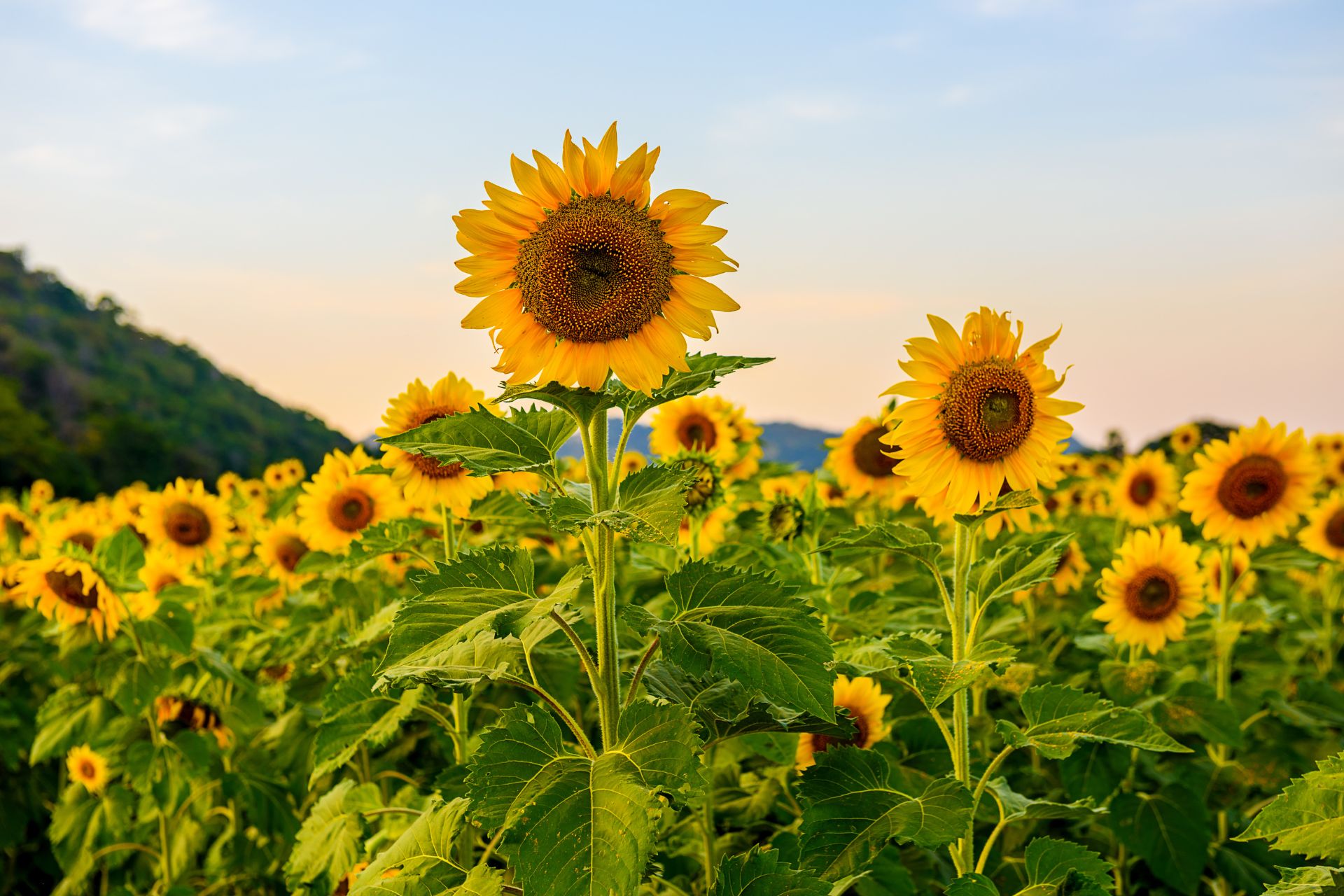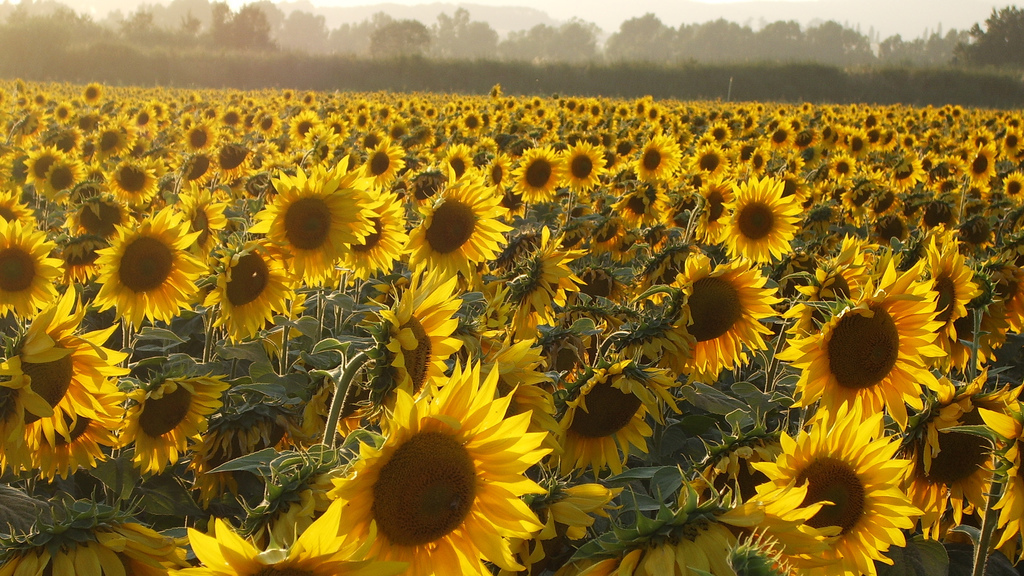Nothing captures the essence of summer quite like sunflowers. Their vibrant, golden petals bring a warm seasonal glow to any bouquet.
These cheerful blooms, resembling miniature suns, are the perfect flower to spread summer joy. We love featuring them in our floral arrangements!
Are you a sunflower enthusiast? Here are some fascinating facts that make these flowers even more remarkable:
Sunflowers Are Amazingly Versatile
Originating in North America, sunflowers have been cultivated for over 4,500 years. One reason for their long history is that almost every part of the plant is edible. The leaves, stalks, and roots were all used as food by indigenous peoples. In fact, before crops like corn became widespread, sunflowers were a staple food in North America.
Sunflowers were also processed into flour, and their seeds were roasted and consumed. As is still common today, sunflower oil was used in cooking. Additionally, the plant’s oil and pigments were applied in cosmetics and dyes, while the stalks were used in construction.
Sunflowers became popular as ornamental flowers after Spanish explorers brought them to Europe in the 1500s.

The Symbolic Meaning of Sunflowers
With their bright, sun-like appearance, it’s no wonder sunflowers are seen as symbols of positivity. They are often gifted to express emotions like happiness, warmth, luck, admiration, and friendship. Whether celebrating a joyful moment or offering comfort, sunflowers are a perfect choice.
Sunflowers Follow the Sun
Not only do sunflowers resemble tiny suns, but their heads also track the sun’s movement across the sky. Young sunflowers have internal biological clocks that allow them to follow the sun from east to west during the day and return to their original position at night.
However, this sun-tracking behavior stops once they fully mature. At this stage, sunflowers remain facing east to attract bees and other pollinators.

Sunflowers in Mythology and Culture
In Greek mythology, sunflowers are linked to the story of Clytie and Helios. Clytie, a water nymph, was deeply in love with Helios, the sun god. However, when Helios abandoned her for another goddess, Clytie spent days gazing at him as he crossed the sky, refusing to eat or drink. Eventually, she transformed into a sunflower, which is why these flowers are said to always face the sun.
Sunflowers also held significance for the ancient Inca civilization. They symbolized the sun and were used in temple rituals as part of their religious practices.
Sunflowers Can Grow Exceptionally Tall
On average, standard sunflowers grow between 6 to 10 feet in height, but they can get much taller. The world’s tallest sunflower ever recorded reached 30 feet and required an intricate scaffold for support. It was grown in Germany by Hans-Peter Schiffer, who has broken this record multiple times.

There Are Many Types of Sunflowers
The most recognized sunflower is the Helianthus annuus, but there are actually around 70 different species in the Helianthus family, all native to North and Central America. Beyond the traditional yellow varieties, there are also red and white sunflowers. Not all sunflowers have the familiar shape either; some have fluffy, ruffled petals like the Orange Sun variety.
Sunflowers Can Help Clean the Environment
Sunflowers have a remarkable ability to absorb toxins, including heavy metals and radiation. After nuclear disasters like Chernobyl and Fukushima, scientists planted millions of sunflowers to help restore the land. They have also been used to clean areas with high levels of lead contamination.
Scientifically known as “hyperaccumulators,” sunflowers can absorb far more contaminants than other plants. This capability may have evolved partly as a defense mechanism, making the plants less appealing to herbivores.

Sunflowers Are Made of Thousands of Tiny Flowers
What looks like a single sunflower bloom is actually made up of up to two thousand tiny florets. Each floret is a small flower packed with nectar, making sunflowers a favorite feeding spot for bees.
